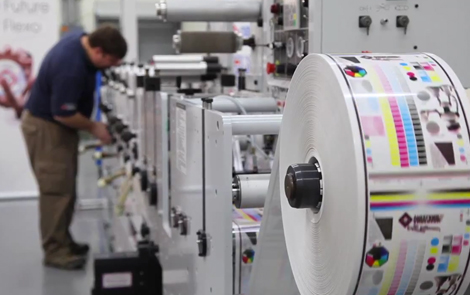Flexo Graphic Inks

Description
Flexography is a relief printing process, which is very similar to the letterpress printing process. The image area is raised on the image carrier to carry out printing. In letterpress, the image is made by a metal surface on a flatbed or a hard polymer mounted on a cylinder, whereas in flexography it is made of a soft polymer plate or flexible photopolymer plate. The image areas are formed on the flexible photopolymer by exposing it to light. After exposure, the flexible photopolymer plate is processed by the use of solvents. The solvents wash out the unhardened material leaving a raised image area as the non-image area is mostly comprised of unhardened monomer or pre-polymer.
The flexographic press can have the anilox roller partially submerged in the ink fountain or a metering roller that is submerged in the fountain and transfers ink to the anilox roller. The doctor blade scrapes off the excess ink from the anilox roller and the anilox transfers the ink to the plate cylinder. The ink is finally transferred to the substrate with the help of the impression cylinder. The impression cylinder creates enough pressure between the plate and the substrate to transfer the ink from the plate to the substrate. This pressure between the plate and the anilox is termed as ‘kiss impression pressure‘. If the pressure is, more than that is required, then dot bridging can occurs.